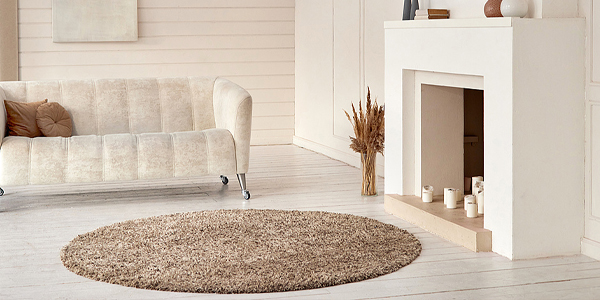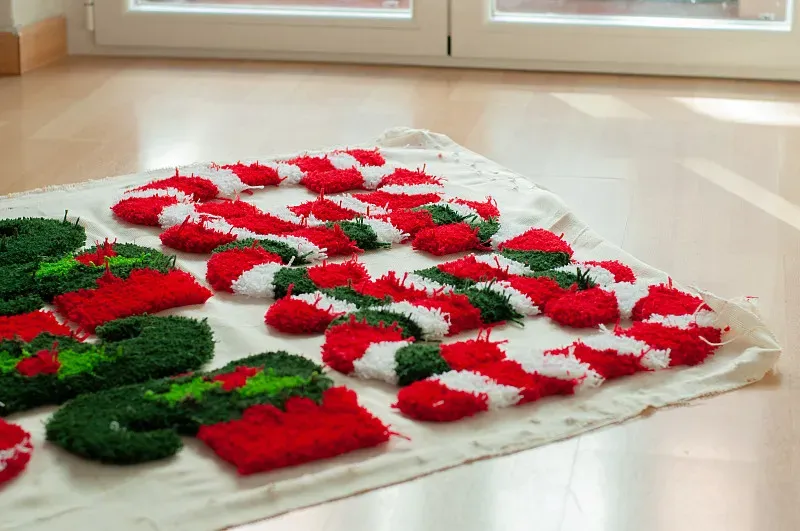
/
Hesen Brings You into the World of Handcrafted Tufted Carpets: Behind the Design and Creation
hesen
Handcrafted tufted carpets have long been admired for their beauty and durability. These rugs are not just home décor items, but rather works of art that reflect centuries of tradition, innovation, and craftsmanship. In this article, we will take you through the process of creating a tufted carpet from the design phase to its final production. Hesen Rugs, with their commitment to quality and innovation, exemplify the artistry and craftsmanship that goes into each of these unique pieces.
The Design Process: From Concept to Creation
The journey of creating a tufted carpet begins with a spark of inspiration. Designers at Hesen Rugs draw from various influences, including cultural traditions, modern aesthetics, and customer preferences. They start by creating rough sketches, followed by detailed designs that incorporate color palettes, patterns, and textures. The design process is both a creative and technical endeavor, as it requires a deep understanding of how different elements will come together to form a harmonious final piece.
At Hesen Rugs, the design phase is a collaborative process that involves designers, craftsmen, and clients. Customization is a key feature of Hesen’s offerings, ensuring that each rug aligns with the client’s vision while retaining a sense of artistic integrity.
Selecting the Materials: The Foundation of Quality
Once the design is finalized, the next crucial step is selecting the materials. The quality of materials directly impacts the durability, texture, and appearance of the final rug. Hesen Rugs uses high-quality wool, silk, and other premium fibers to create carpets that are not only visually stunning but also long-lasting.
Wool is often the preferred choice for tufted carpets due to its softness, resilience, and natural stain resistance. Hesen Rugs’ artisans carefully select each fiber to ensure it meets the brand’s exacting standards. This attention to material selection ensures that every rug crafted by Hesen is of exceptional quality, providing both beauty and functionality to any space.
Tufting: The Heart of Carpet Craftsmanship
The tufting process is the heart of carpet making, where the magic truly happens. Using specialized tufting guns, skilled artisans at Hesen Rugs carefully insert yarns into a canvas backing, creating the intricate patterns and textures that define the design. This process is time-consuming and requires significant expertise to ensure that the finished rug matches the original design's intended aesthetic.
Hesen Rugs' artisans are masters of their craft, using both hand-tufted and machine-tufted techniques to achieve the desired effect. This combination of traditional craftsmanship and modern technology allows Hesen to produce rugs that are both intricate in design and impeccable in quality.
Finishing Touches: The Final Refinement
After the tufting process, the rug undergoes several finishing touches. These include shearing, where the pile is trimmed to create a uniform surface, and washing to ensure the fibers are clean and free of any residual chemicals. The rug is also inspected for any imperfections or inconsistencies before being shipped.
At Hesen Rugs, this final stage is where the rug truly comes to life. The meticulous finishing ensures that each carpet has a smooth texture and vibrant colors, while the durability is also guaranteed for years of use. Hesen Rugs’ commitment to perfection is evident in every final piece, making each rug a long-lasting investment.
Customizing Your Own Hesen Rug
One of the standout features of Hesen Rugs is their ability to create fully customized, one-of-a-kind pieces for their clients. Whether it’s a unique design, specific color choices, or personalized size requirements, Hesen’s team works closely with clients to ensure that their vision is brought to life.
Through the combination of expert craftsmanship, premium materials, and personalized design, Hesen Rugs ensures that every rug is a statement piece. Whether for a residential or commercial space, a Hesen rug adds a touch of elegance and artistry that cannot be replicated.
Conclusion: The Art of Tufted Carpets at Hesen Rugs
From the initial spark of inspiration to the final tufted masterpiece, the creation of a handcrafted carpet is a complex and intricate process that involves a high level of skill, patience, and creativity. Hesen Rugs exemplifies the artistry behind tufted carpet creation, offering high-quality, custom-designed rugs that are both beautiful and durable.
By investing in a Hesen rug, you’re not just purchasing a carpet—you’re bringing home a piece of art, crafted with care and passion by skilled artisans who understand the importance of both tradition and innovation.

/
Care for your home: Hesen's guide to the care and cleaning of handmade tufted carpets
hesen
1. Regular Vacuuming
To maintain the beauty of your Hesen handtufted rug, it’s important to vacuum it regularly. This helps remove dirt, dust, and debris from the surface, preventing them from becoming embedded in the fibers. Aim to vacuum your rug at least once a week, especially in high-traffic areas.Hesen Rugs are made with high-quality materials that can handle regular vacuuming without damaging the fibers. Their dense, plush pile ensures that they maintain their shape even after frequent cleaning.
2. Spot Cleaning Spills Immediately
Accidents happen, but quick action can prevent spills from damaging your rug. If something is spilled, blot the area immediately with a clean, dry cloth. Avoid rubbing the spill, as it can push the stain deeper into the fibers. For more stubborn stains, a mild detergent diluted in water can be used.
Thanks to their strong craftsmanship and durable fibers, Hesen handtufted rugs are more resistant to stains compared to mass-produced rugs. Their construction helps in easier stain removal without affecting the quality of the fibers.
3. Professional Cleaning
Over time, even with regular vacuuming and spot cleaning, your rug may require a deeper clean. Professional cleaning is recommended every 1-2 years, depending on usage. A professional can remove dirt and grime that has worked its way deep into the fibers, restoring your rug to its original condition.
Hesen handtufted rugs are designed for longevity. Regular professional cleaning will ensure that their vibrant colors and intricate designs remain intact. Hesen’s high-quality materials stand up well to deep cleaning, preserving the rug’s structure and appearance.
4. Protecting from Sunlight
Prolonged exposure to direct sunlight can cause your rug’s colors to fade. To protect your Hesen rug, try to place it away from direct sunlight or use window coverings to minimize the amount of sun exposure. Rotating your rug regularly can also help ensure even wear and prevent fading in one area.
Hesen’s premium wool and high-density tufting make the rug resistant to fading and wear, but taking steps to protect it from prolonged sun exposure will help preserve its beauty for years to come.
5. Proper Padding and Placement
To prevent your rug from slipping and to protect the fibers from damage, always use a quality rug pad beneath your Hesen rug. This will not only provide extra cushioning but also protect the rug’s backing and prevent wear and tear on both your floor and the rug.
Hesen rugs are designed with durability in mind. Using a rug pad helps prolong their lifespan, ensuring that they maintain their plushness and stability.
6. Dealing with Fringes
The fringes of handtufted rugs can be delicate and prone to fraying. To maintain their look, avoid stepping on them or pulling on the fringe. Gently vacuum the fringes with a soft brush attachment or trim any loose fibers with scissors.
Hesen handtufted rugs are meticulously crafted with attention to detail, including the fringes, ensuring they remain intact and well-maintained even after regular use.
Conclusion
Caring for your Hesen handtufted rug doesn’t have to be complicated. With regular maintenance and proper cleaning techniques, your rug will continue to be a beautiful addition to your home for years to come. By following these simple steps, you can ensure that your Hesen rug stays in top condition, preserving its texture, vibrancy, and luxurious appeal.
Hesen Rugs are designed with the highest standards of craftsmanship, ensuring longevity and ease of maintenance. Their exceptional quality means they are a great investment that will continue to enhance your home with beauty and comfort.
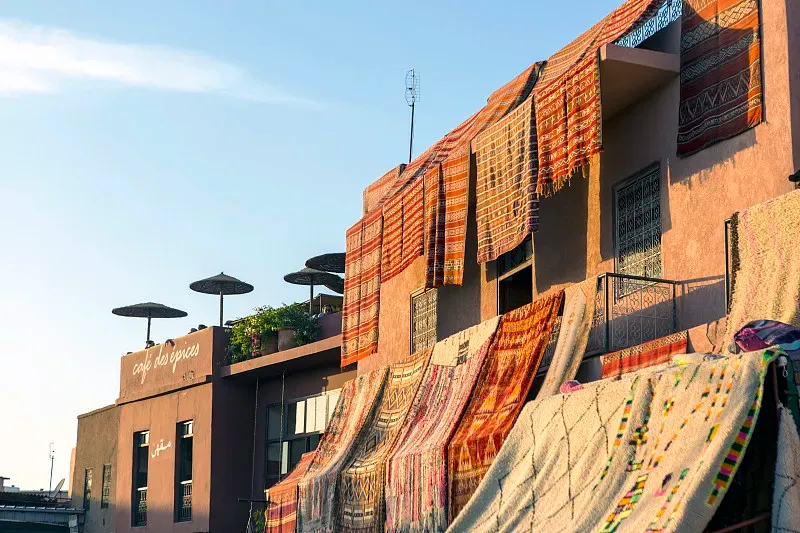
/
Hand-Tufted Carpets: A History and Cultural Legacy of Craftsmanship
hesen
Hand-tufted carpets have a rich history rooted in centuries of artistry and cultural significance. The intricate process of hand-tufting, which involves pushing yarn through a fabric backing to create the carpet's texture, originated as a method of artistic expression and a way to create durable, functional art. Early examples of these carpets can be traced back to ancient Persia, where skilled artisans used wool and silk to weave intricate designs that symbolized wealth, power, and cultural heritage.
Hesen Rug continues this rich tradition by incorporating advanced tufting techniques, ensuring each piece combines craftsmanship with longevity, offering both beauty and durability for modern homes.
The cultural importance of hand-tufted carpets cannot be overstated. In ancient times, carpets were not just functional household items but also symbols of status and cultural identity. They were often used in royal courts, temples, and palaces, and each region developed its own unique weaving and tufting methods. The patterns on these carpets often carried deep symbolism, telling stories of the region's folklore, religion, and traditions. This connection to cultural heritage gave these carpets a timeless appeal, making them highly prized possessions.
Hesen Rug embraces the cultural significance of hand-tufted carpets, ensuring that every design reflects deep-rooted tradition while also offering a contemporary flair. The brand’s diverse patterns cater to various cultural tastes, blending history with modern aesthetics.
As the centuries passed, the art of carpet-making spread across different regions of the world, with each region refining the craft. In Europe, particularly in the UK, hand-tufting became more widespread during the industrial revolution, though it was still a meticulous handcraft rather than mass production. The 20th century saw a resurgence in the appreciation of hand-made carpets, with a focus on sustainable, high-quality production methods and the revival of traditional designs.
Hesen Rug combines modern design sensibilities with traditional tufting methods, creating carpets that stand the test of time. The brand emphasizes eco-friendly materials and sustainable production, aligning with contemporary values while maintaining the integrity of traditional craftsmanship.
One of the key elements of hand-tufted carpets is the dedication to detail and quality. The tufting process is labor-intensive and requires precision and patience. Craftsmen spend hours working on each rug, carefully choosing colors, patterns, and textures to create a final product that is both visually appealing and durable. The investment in time and effort gives each carpet a unique personality, something that machine-made rugs cannot replicate.
Hesen Rug’s commitment to quality craftsmanship is evident in every carpet it produces. Each rug is hand-tufted with precision, ensuring that every stitch adds to the overall beauty and durability of the piece. Hesen’s artisans pride themselves on their meticulous attention to detail.
In today’s modern world, hand-tufted carpets continue to be a symbol of luxury and exclusivity. The appreciation for handcrafted items has grown as people increasingly seek products that are both functional and artistic. The timeless beauty of hand-tufted carpets brings warmth, character, and an artisan touch to any space, making them highly desirable for homeowners, interior designers, and collectors alike.
Hesen Rug Advantage:
Hesen Rug is at the forefront of the hand-tufted carpet industry, blending traditional craftsmanship with contemporary design trends. The brand’s commitment to creating luxurious, unique rugs ensures that every piece is an investment in art and quality, elevating any space it adorns.
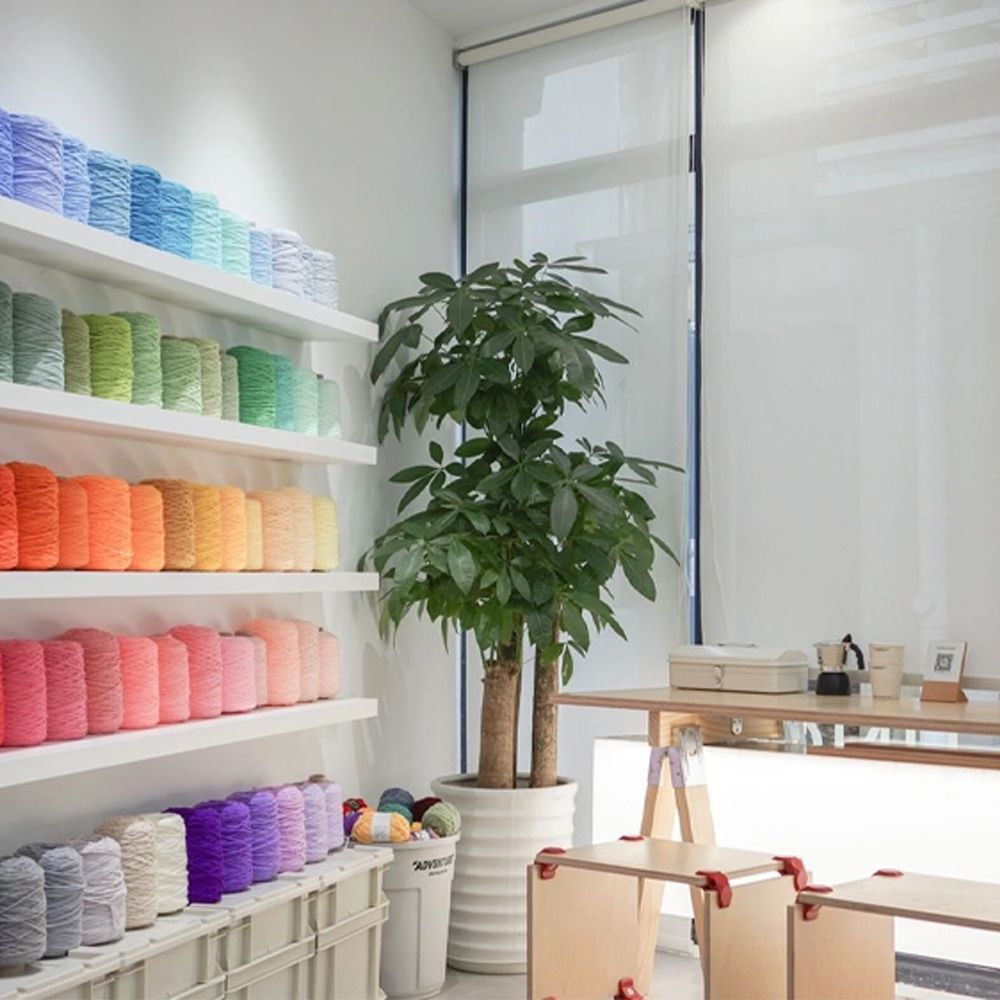
/
Handmade Tufted Carpets: The Perfect Addition to Modern Home Interiors
hesenHandmade Tufted Carpets: The Perfect Addition to Modern Home Interiors
Handmade tufted carpets have been cherished for centuries for their rich textures, intricate designs, and timeless appeal. As modern interior design trends continue to evolve, these beautiful rugs remain a symbol of luxury and sophistication. Whether you're decorating a cozy living room or adding character to a minimalist dining area, handmade tufted carpets are the perfect accessory to elevate any modern home decor.
Why Handmade Tufted Carpets Stand Out in Modern Home Design
Unlike machine-made rugs, handmade tufted carpets offer unparalleled quality and uniqueness. Crafted with precision by skilled artisans, each rug is a masterpiece that reflects centuries of tradition in textile craftsmanship. The tactile experience of walking on a handwoven carpet, with its plush texture and intricate detailing, brings a sense of comfort and elegance to your home.
When paired with contemporary furniture, handmade tufted carpets create a warm and inviting atmosphere. Their vibrant colors and soft textures can complement various design styles, from minimalistic Scandinavian designs to more eclectic bohemian interiors. A well-chosen tufted carpet can define a space, becoming a statement piece that ties the entire room together.
At HESEN Carpets, we take pride in delivering the finest quality handmade carpets that perfectly match modern interiors. Our carpets are made using pure handcraftsmanship, ensuring each piece is unique and of the highest quality. The artisans use only the finest materials such as premium wool and silk, which add to the softness and durability of the rug. Moreover, every carpet undergoes rigorous inspection to guarantee flawless craftsmanship.
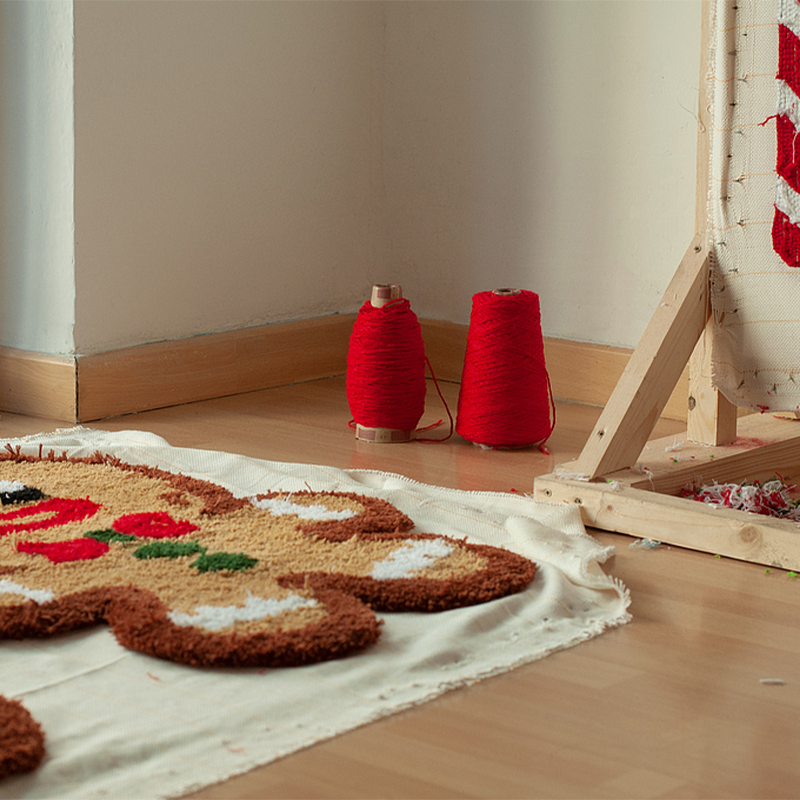
/
How to Choose the Right Handwoven Tufted Carpet
hesen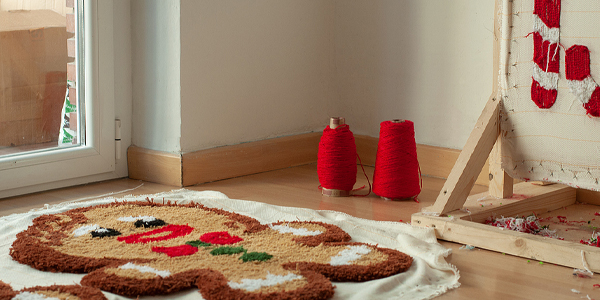
Choosing the right handwoven tufted carpet for your home or office can be a rewarding experience, but it’s important to consider several factors to ensure that you make the best decision. A handwoven tufted carpet is not just an aesthetic addition to your space; it’s a long-term investment in quality, comfort, and style. In this guide, we’ll explore the essential elements to consider when selecting a handwoven tufted carpet and why HESEN Carpets stand out as a top choice for anyone looking for high-quality, handcrafted carpets.
1. Consider the Material of the Carpet
The material used to make a handwoven tufted carpet plays a critical role in its durability, feel, and overall aesthetic. Common materials for high-quality tufted carpets include wool, cotton, silk, and synthetic fibers. Wool, for example, is prized for its softness, natural resilience, and ability to retain its shape over time. Silk provides a luxurious feel, while synthetic materials offer durability at a lower price point.
HESEN Carpets are made with the highest quality materials, ensuring that each rug not only looks stunning but also stands the test of time. Whether it’s the softness of wool or the luxurious feel of silk, HESEN carpets are crafted using only the finest fibers. The combination of premium materials ensures that HESEN carpets are both comfortable and long-lasting, making them a smart choice for any space.
2. Look for High-Quality Craftsmanship
Handwoven tufted carpets are valued for their craftsmanship, which directly impacts the rug's durability and texture. When choosing a carpet, it’s essential to look at the knotting or tufting technique used, as well as the overall construction. Handwoven rugs tend to last longer and maintain their beauty far better than machine-made alternatives.
HESEN Carpets are known for their meticulous craftsmanship. Each carpet is handwoven by skilled artisans who take great care to ensure every tuft is placed with precision. This attention to detail not only guarantees a beautiful finished product but also ensures long-term durability. HESEN carpets are made to withstand daily wear and tear while maintaining their original charm and texture.
3. Consider the Design and Style
A tufted carpet should complement the overall aesthetic of your home or office. Handwoven carpets come in a variety of designs, from traditional patterns to modern abstract motifs. Consider the color scheme of the room and the type of design that best reflects your personal taste. Customization options are also available with some brands, allowing you to create a unique rug that perfectly fits your space.
HESEN Carpets offers a wide range of designs, from classic to contemporary, ensuring there’s something to suit every taste. Whether you're looking for an intricate, traditional pattern or a minimalist modern design, HESEN has the expertise to craft a carpet that enhances your space. Furthermore, customization services allow you to tailor the design to fit your exact specifications, making your carpet a truly unique piece.

/
Hand-Woven Pile Carpets: History and Tradition
hesen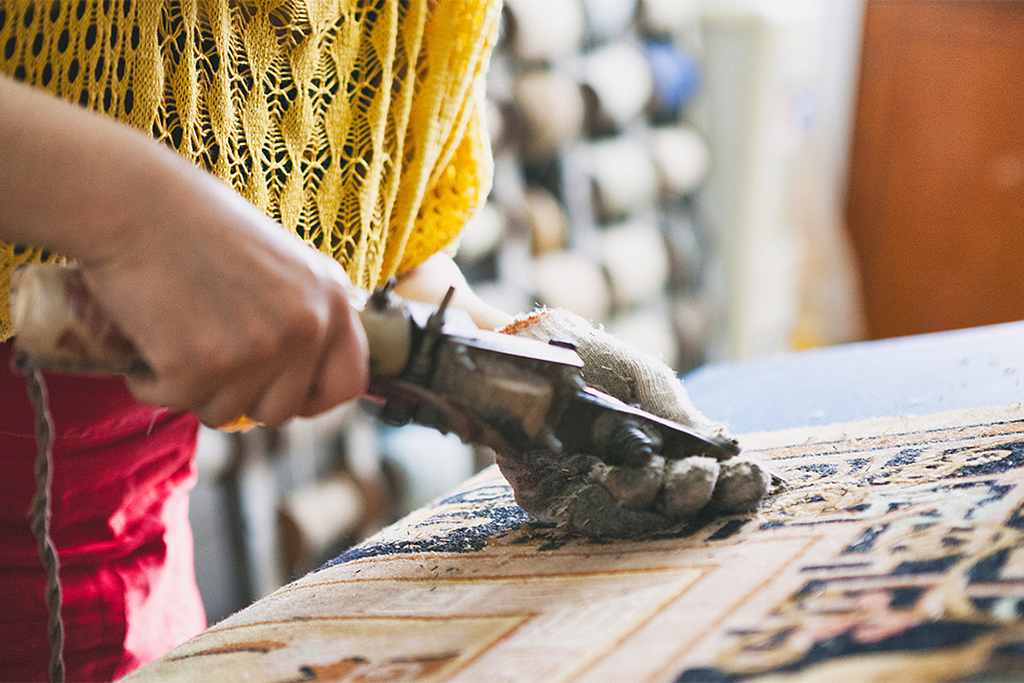
Hand-Woven Pile Carpets: History and Tradition
Hand-woven pile carpets are cherished for their intricate craftsmanship, rich patterns, and deep cultural significance. As a traditional home decor item, these carpets not only hold a prominent place in history but also continue to be highly regarded in modern interior design. This article explores the origins, craftsmanship, cultural symbolism, and contemporary significance of hand-woven pile carpets.
1. Origins and Development of Hand-Woven Pile Carpets
The history of hand-woven pile carpets dates back thousands of years, with the earliest examples emerging in ancient Persia (modern-day Iran), Central Asia, and the Caucasus region. These areas, rich in natural resources and steeped in cultural traditions, provided fertile ground for the development of carpet-making techniques.
Carpets in their early form were made from animal hides and rough plant fibers. As weaving techniques advanced, finer materials such as wool and silk began to be used. Persia, in particular, is widely regarded as the birthplace of the art of carpet weaving. By the 6th century BCE, carpets were being woven with highly detailed patterns and designs that symbolized the wealth, status, and power of the ruling class.
Over time, carpet-making techniques spread to other regions such as Turkey, India, and China, each adopting and adapting the art to suit their own cultural preferences, resulting in distinct regional styles.
2. Traditional Craftsmanship of Hand-Woven Pile Carpets
Creating a hand-woven pile carpet is a labor-intensive and intricate process, typically involving the work of several artisans. The main stages of the process include material selection, dyeing, weaving, and pile tufting.
Material Selection: Traditional pile carpets are made from natural fibers, such as wool, silk, and cotton. Wool is the most common material used due to its elasticity and durability, while silk is reserved for more luxurious carpets, often used by royalty and nobility.
Dyeing: Natural dyes, derived from plants, minerals, and insects, are traditionally used to color carpets. These dyes produce rich, deep colors that are both vibrant and long-lasting. While synthetic dyes have become more common in modern carpet production, traditional weavers often continue to rely on natural dyes to preserve the authenticity and quality of their work.
Weaving and Pile Tufting: Weaving is the core technique in the creation of pile carpets. The base of the carpet is woven from cotton, wool, or silk, and the pile is formed by knotting or tufting yarns into the base material. The density, length, and texture of the pile vary depending on the design, contributing to the carpet’s luxurious feel and intricate detail.
Finishing: Once the carpet is woven, the pile is trimmed, and the surface is smoothed to ensure an even and uniform texture. This final step is critical in ensuring the durability and aesthetic appeal of the finished carpet.
3. Cultural Symbolism of Hand-Woven Pile Carpets
Hand-woven pile carpets are not only practical items for interior decoration, but they also carry deep cultural and symbolic meanings. The designs of carpets from different regions often reflect the spiritual beliefs, values, and connection to nature of the people who created them.
Persian Carpets: Persian carpets are known for their elaborate floral and geometric designs, often symbolizing harmony with nature and the spiritual world. These carpets have been symbols of wealth and refinement for centuries, reflecting the grandeur of Persian culture.
Turkish Carpets: Turkish carpets are known for their bold geometric patterns and vibrant colors. These carpets often feature motifs related to Islamic spirituality and folklore, and they are deeply tied to Turkish religious traditions.
Indian Carpets: Indian hand-woven carpets, particularly those made of silk, often feature intricate designs influenced by Hindu, Buddhist, and Islamic traditions. These carpets are rich in symbolism and often reflect the spiritual themes of their respective cultures.
4. The Modern Relevance and Preservation of Hand-Woven Pile Carpets
In the modern era, while mass-produced machine-made carpets dominate the market, hand-woven pile carpets continue to hold a place of prestige, particularly in high-end markets. Many contemporary interior designers and collectors still seek out hand-woven carpets for their artistry, craftsmanship, and cultural significance.
In recognition of the cultural value of hand-woven carpets, many countries and regions have taken steps to preserve and protect this traditional craft. For example, Iran, Turkey, and India have established programs to safeguard the heritage of carpet weaving, and UNESCO has recognized the traditional carpet-making techniques of various countries as part of its Intangible Cultural Heritage.
5. Conclusion
Hand-woven pile carpets are not just decorative objects; they are repositories of history, culture, and artistic expression. Through their intricate designs and use of natural materials, these carpets continue to reflect the values, beliefs, and aesthetics of the cultures that produce them. Whether displayed in royal palaces or modern homes, they remain a symbol of enduring craftsmanship and timeless beauty.




